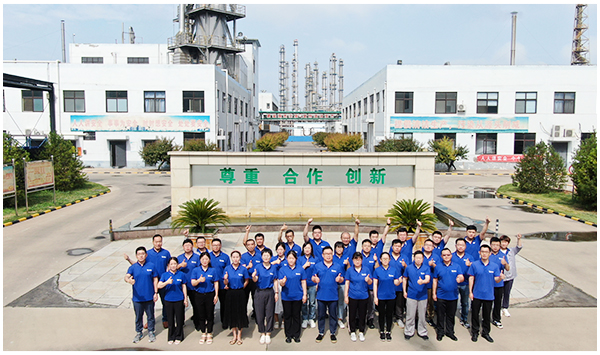
News
nov. . 26, 2024 20:25 Back to list
Highly Effective EDTA Chelating Agents for Optimal Performance and Application
The Role of High-Quality EDTA Type Chelating Agents in Modern Applications
Chelating agents are compounds that can form multiple bonds with a single metal ion, effectively grabbing the metal and holding it in a stable complex. Ethylenediaminetetraacetic acid (EDTA) is among the most widely used chelating agents in various fields, including medicine, agriculture, and industrial processes. This article explores the significance of high-quality EDTA-type chelating agents, their synthesis, applications, and benefits.
Understanding EDTA
EDTA, a synthetic amino polycarboxylic acid, was first synthesized in the 1930s. It contains four carboxylate groups and two amino groups, allowing it to effectively bind with metal ions. The chelation process is reversible, meaning that EDTA can release the metal ions when needed, making it a versatile agent. High-quality EDTA is characterized by its purity, stability, and ability to efficiently form complexes with various metal ions such as lead, mercury, calcium, and iron.
Synthesis of High-Quality EDTA
The production of high-quality EDTA involves several chemical processes to ensure maximum purity and functionality. Typically, EDTA is synthesized through the reaction of ethylenediamine with chloroacetic acid. Refinements in the synthesis process, including controlled reaction conditions and advanced purification techniques, result in products that are more effective and safer for various applications. High-quality EDTA demonstrates minimal impurities, which can otherwise interfere with its performance in complexing metal ions.
Applications of High-Quality EDTA
1. Medical Field In medicine, EDTA is used for chelation therapy to treat heavy metal poisoning. It binds to toxic metals in the bloodstream, allowing for their excretion from the body. High-quality EDTA is crucial in these applications, as impurities can lead to adverse reactions or less effective treatment.
2. Agriculture EDTA is extensively used in agricultural fertilizers to enhance nutrient availability. Many essential nutrients, such as iron, zinc, and manganese, can become unavailable to plants due to their reaction with soil components. By forming stable chelate complexes with these nutrients, EDTA ensures their solubility and accessibility to plants, promoting healthy growth.
3. Industrial Applications In various industrial processes, particularly in metal finishing, textile, and pulp and paper industries, high-quality EDTA serves as a powerful chelating agent. It helps to prevent metal ion contamination, enhances product quality, and facilitates cleaning processes, ensuring that the final products meet stringent quality standards.
high quality edta type chelating agent

4. Food Industry EDTA is also used as a preservative in the food industry. It prevents discoloration and rancidity by chelating trace metals that can catalyze oxidative reactions. The use of high-quality EDTA is essential here as it ensures the safety and stability of food products.
Benefits of High-Quality EDTA
The benefits of using high-quality EDTA-type chelating agents are numerous
- Increased Efficiency High-purity EDTA performs better in metal binding, leading to more effective applications in medicine, agriculture, and industry.
- Safety Using high-quality EDTA minimizes the risks associated with impurities that can cause harmful side effects or undesired reactions.
- Environmental Impact High-quality EDTA products contribute to environmentally friendly practices. For instance, in agriculture, they promote nutrient efficiency, reducing the need for excessive fertilizer application, which can lead to environmental degradation.
- Cost-Effectiveness While high-quality EDTA may have a higher upfront cost, its efficiency often leads to reduced overall expenses by minimizing the amount needed for effective results.
Conclusion
High-quality EDTA-type chelating agents play a crucial role across various sectors. Their ability to form strong complexes with metal ions underlines their importance in applications ranging from medical treatments to agricultural practices and industrial processes. As industries continue to focus on efficiency and safety, the demand for high-quality chelating agents like EDTA will undoubtedly remain significant. The continued research and development in this field will help to create even more effective and environmentally friendly chelating agents, further enhancing their utility and impact in a wide array of applications.
-
Polyaspartic Acid Salts in Agricultural Fertilizers: A Sustainable Solution
NewsJul.21,2025
-
OEM Chelating Agent Preservative Supplier & Manufacturer High-Quality Customized Solutions
NewsJul.08,2025
-
OEM Potassium Chelating Agent Manufacturer - Custom Potassium Oxalate & Citrate Solutions
NewsJul.08,2025
-
OEM Pentasodium DTPA Chelating Agent Supplier & Manufacturer High Purity & Cost-Effective Solutions
NewsJul.08,2025
-
High-Efficiency Chelated Trace Elements Fertilizer Bulk Supplier & Manufacturer Quotes
NewsJul.07,2025
-
High Quality K Formation for a Chelating Agent – Reliable Manufacturer & Supplier
NewsJul.07,2025
